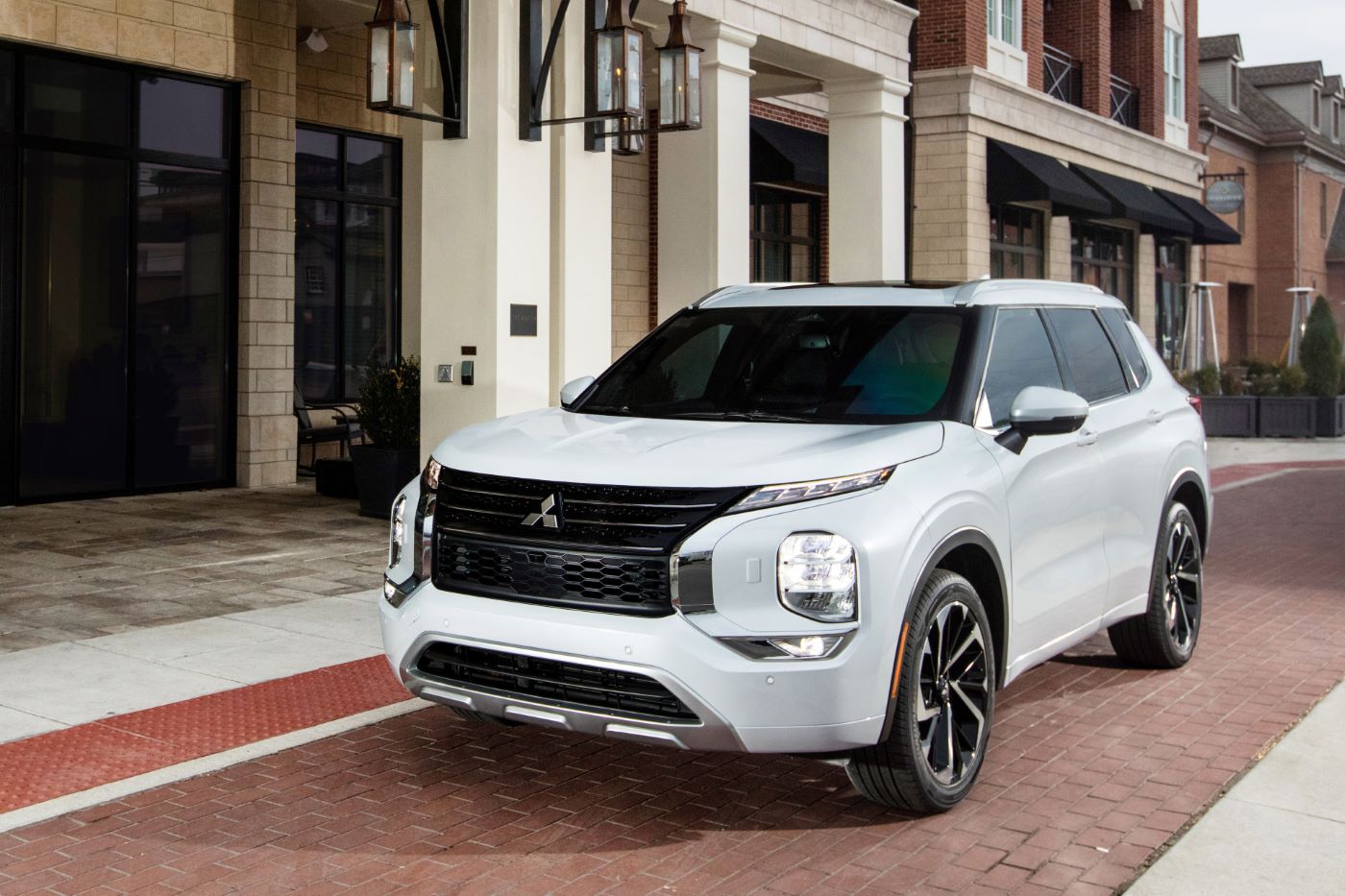In today’s ever-evolving automotive market, the Sport Utility Vehicle (SUV) reigns supreme. Over the past two decades, SUVs have transformed from niche, off-road vehicles into mainstream family transporters, daily commuters, and lifestyle statements.
Their elevated ride height, spacious interiors, and perceived robustness have made them a go-to choice for millions of drivers around the world. However, the perception of strength and safety doesn’t always align with reality.
While many SUVs offer superior visibility and a greater sense of security behind the wheel, not all of them are created equal when it comes to crashworthiness, particularly in the case of front-impact collisions, which remain among the most dangerous and fatal types of car accidents.
Front-impact crashes, also referred to as frontal or head-on collisions, occur when the front end of a vehicle collides with another object, vehicle, or barrier. These types of accidents often happen at higher speeds and can result in catastrophic injuries due to the enormous force involved.
Despite technological advancements in safety engineering, many vehicles still underperform in this crucial category, putting occupants at unnecessary risk. This makes front-impact crash-test scores a vital metric when evaluating the overall safety of an SUV, especially for consumers who prioritize protection for themselves and their families.
The evaluation of these vehicles is commonly conducted by organizations such as the Insurance Institute for Highway Safety (IIHS) and the National Highway Traffic Safety Administration (NHTSA). These agencies put vehicles through a battery of rigorous tests to simulate real-world crash scenarios.
These include moderate overlap front tests, small overlap front tests, and full-frontal barrier tests, all of which are designed to assess structural integrity, airbag performance, and restraint system effectiveness.
High-performing vehicles in these tests demonstrate excellent cabin preservation, controlled deceleration forces, and minimized intrusion, all of which contribute to better survival rates and fewer serious injuries.
It’s essential to recognize that not every SUV benefits equally from modern safety technologies or structural innovations. While some manufacturers invest heavily in crash prevention systems, high-strength steel frames, and advanced restraint systems, others prioritize cost-cutting or aesthetics at the expense of safety.
This creates a wide disparity in crash-test performance across the SUV market. For buyers, this means that the safety level of an SUV cannot be assumed based on its price tag, brand, or appearance alone. Instead, objective data from crash tests should be a cornerstone of any vehicle purchasing decision.
In this comprehensive article, we delve into two ends of the SUV safety spectrum. First, we’ll spotlight five SUVs with the best front-impact crash-test scores, explaining how their structural engineering, airbag systems, and preventive technologies contribute to top-tier safety performance.
These vehicles have not only passed crash tests with flying colors but have set industry benchmarks in frontal collision protection. From reinforced chassis to state-of-the-art driver assistance features, these SUVs exemplify what modern safety should look like.
On the other hand, we will examine five SUVs that performed poorly in front-impact crash testing. Whether due to outdated design, insufficient safety tech, or subpar structural performance, these models pose a higher risk to occupants in the event of a frontal crash.
In most cases, these vehicles either predate the widespread adoption of active safety features or were built to prioritize affordability over crash resilience. Understanding these safety shortcomings is just as important as recognizing the successes, especially for used car buyers or budget-conscious shoppers.
Safety should never be an afterthought when buying a vehicle. As front-impact collisions remain a leading cause of traffic fatalities and serious injuries, the stakes are too high to rely on assumptions. By learning which SUVs excel—and which fall short—in front-impact crash tests, consumers can make informed, life-saving decisions.
Whether you’re purchasing a new vehicle for your growing family, commuting to work every day, or simply wanting peace of mind on the highway, this guide will help you navigate the SUV landscape with safety at the forefront.
ALSO READ: 5 Cars That Never Have Software Glitches and 5 That Need Constant Updates
5 SUVs with the Best Crash-Test Front-Impact Scores
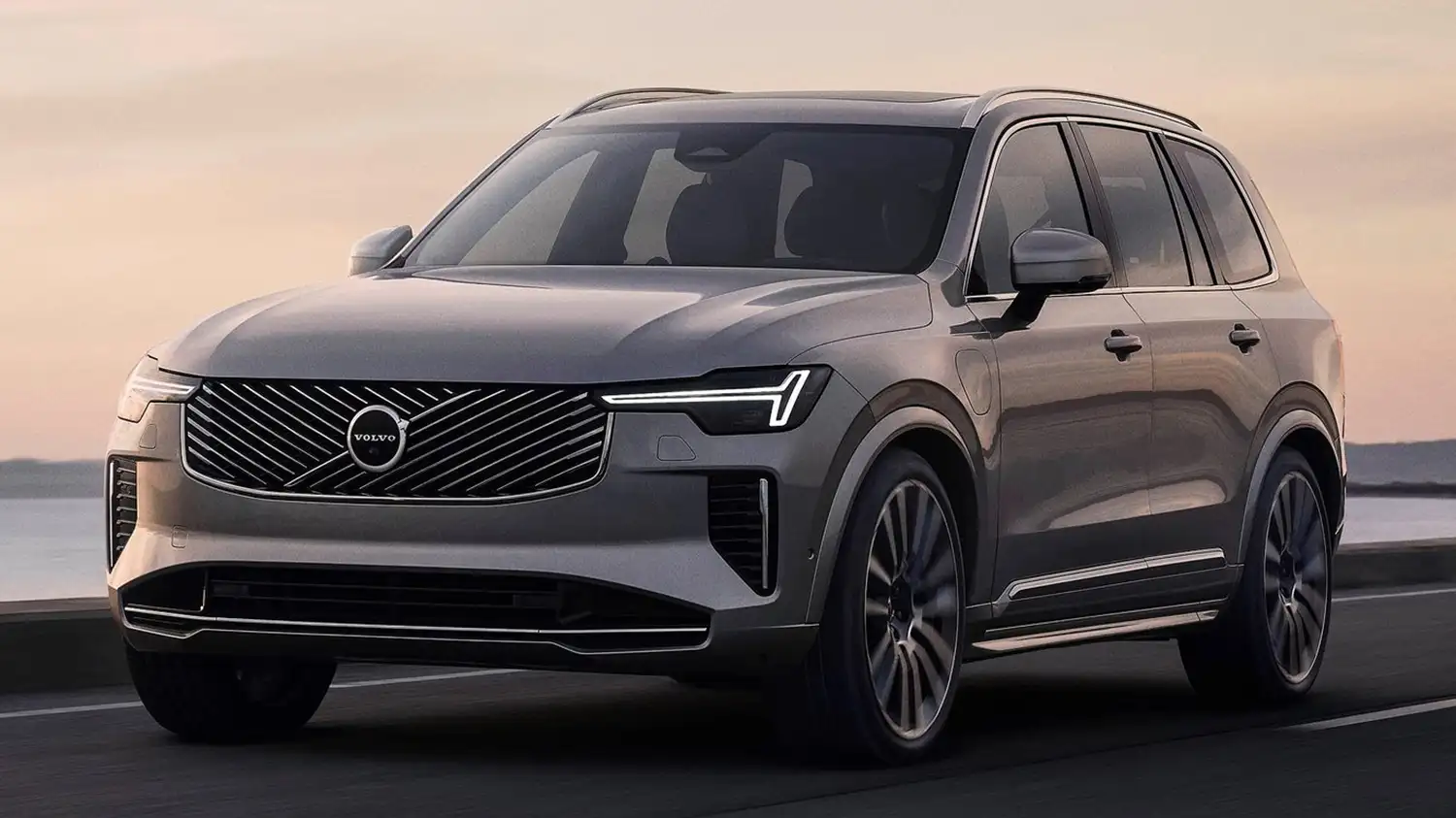
1. Volvo XC90
Volvo’s reputation as a pioneer in automotive safety is well-earned, and the XC90 stands as a testament to the brand’s unwavering commitment to occupant protection. At the core of the XC90’s exceptional front-impact crash performance is its meticulously engineered safety cage.
This cage is crafted from a combination of ultra-high-strength boron steel and reinforced aluminum components, creating a structure that resists deformation while efficiently channeling collision forces away from passengers. This structural integrity is vital, as it helps maintain the cabin’s shape during severe impacts, preserving the survival space for everyone inside.
Beyond its physical frame, the XC90 integrates a comprehensive array of passive and active safety technologies designed to both prevent crashes and protect occupants when collisions occur.
The car is equipped with a sophisticated system of multiple airbags, including front, side, and curtain airbags that deploy with precise timing to cushion passengers. Its front-impact airbags are multi-stage, allowing for variable inflation pressure depending on the severity of the crash and occupant size, optimizing protection without causing unnecessary injury.
Volvo also incorporates cutting-edge active safety features such as City Safety technology, which includes pedestrian, cyclist, and large animal detection. This system works with automatic emergency braking to help avoid frontal collisions altogether or reduce their severity.
Moreover, the XC90 features a forward collision warning system that alerts the driver to impending crashes, giving precious milliseconds to react. Together, these technologies contribute to a significant reduction in crash likelihood, directly influencing its outstanding front-impact test scores.
Another critical aspect of the XC90’s safety arsenal is its seatbelt design. The vehicle uses pre-tensioners and load limiters that tighten and then gradually release seatbelts in the event of a crash, reducing the force on occupants’ chests and helping to prevent injuries.
This feature works in concert with the airbags to keep passengers securely in place. Complementing this is Volvo’s innovative whiplash protection system embedded in the seats, which minimizes neck injuries often caused by rear-end and frontal impacts.
Finally, the XC90’s safety performance is not just theoretical; it has consistently earned top safety ratings from major regulatory bodies worldwide, including the IIHS and Euro NCAP.
These agencies praise the vehicle’s combination of a robust physical structure and intelligent safety systems, often highlighting its ability to protect both adults and children alike. For families and safety-conscious buyers, the Volvo XC90 represents one of the best choices when considering front-impact crash protection in an SUV.
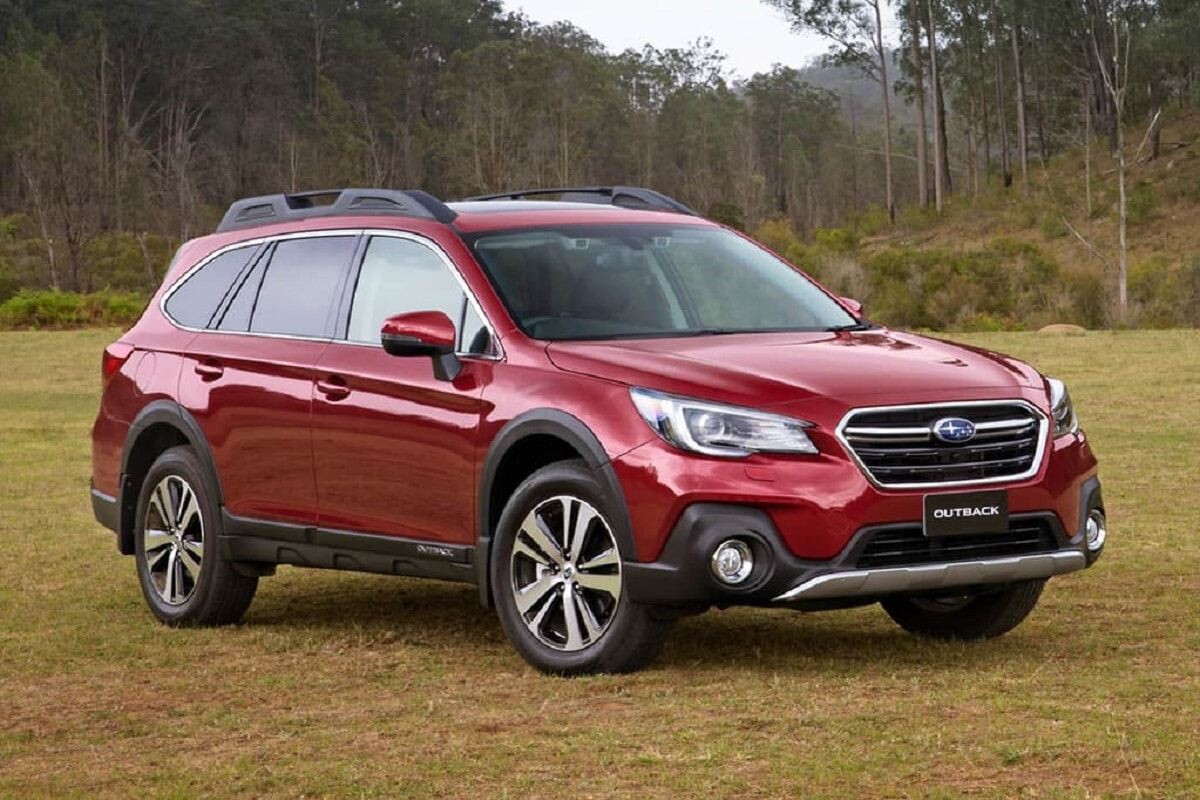
2. Subaru Outback
The Subaru Outback is an excellent example of a vehicle that marries rugged versatility with industry-leading safety performance. Its high front-impact crash-test scores are largely a product of Subaru’s innovative engineering approach that prioritizes occupant protection without sacrificing the Outback’s utility or driving dynamics.
Central to its safety is the Ring-shaped Reinforcement Frame, a unique design that surrounds the passenger cabin with a continuous steel frame, enhancing rigidity and creating a protective shell around occupants.
This structural design allows the Outback to effectively distribute crash forces around the cabin during a frontal collision, significantly reducing the chance of intrusion into the passenger compartment.
This integrity is especially important in higher-speed crashes, where maintaining the structural shape directly correlates to survival rates. In addition, the vehicle’s front crumple zones are engineered to absorb impact energy gradually, lessening the force transmitted to passengers.
The Outback’s active safety technologies further contribute to its stellar front-impact ratings. The EyeSight Driver Assist suite is standard on most trims and includes pre-collision braking, adaptive cruise control, and lane departure warning.
EyeSight actively scans the road ahead, detecting potential hazards and intervening with automatic braking if necessary. This proactive approach reduces the incidence of front-end collisions by alerting drivers to dangers or stepping in to avoid impact altogether.
Inside the cabin, Subaru employs an extensive airbag system designed to provide comprehensive protection. In addition to front airbags, the Outback has side and curtain airbags that extend along the length of the cabin, offering critical head protection for all occupants.
The front seats are specifically designed with active head restraints that move forward during a rear impact to reduce whiplash injuries, a feature that indirectly supports overall crash safety by reducing injury severity.
Stability and control also play a role in preventing frontal crashes, and Subaru’s Symmetrical All-Wheel Drive is a key component in this regard. By delivering power evenly to all four wheels, the Outback maintains traction on slippery or uneven surfaces, helping drivers maintain control and avoid crashes in adverse conditions.
This combination of structural integrity, active prevention systems, and occupant protection features make the Outback a standout in front-impact crash safety.
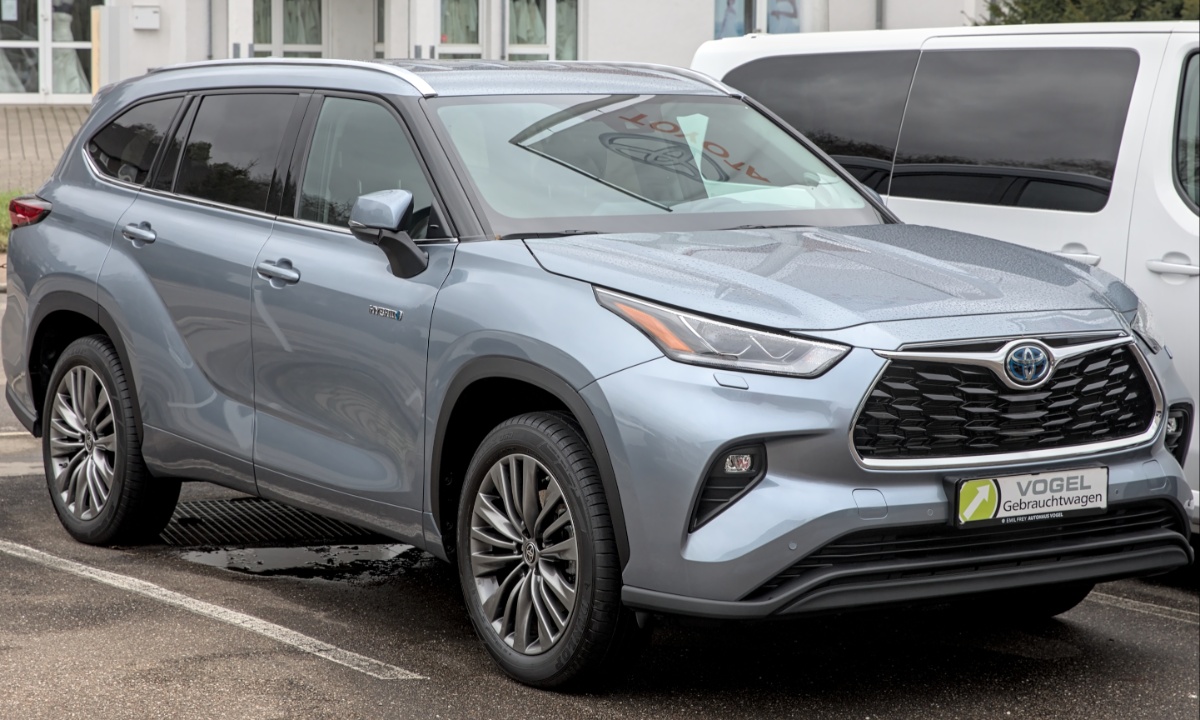
3. Toyota Highlander
The Toyota Highlander is widely recognized for its reliability and family-friendly features, but it also ranks highly in terms of front-impact crash safety due to its advanced engineering and safety technology package.
Toyota employs a multi-layered safety strategy beginning with a high-strength body structure that incorporates strategically placed reinforcements and crumple zones. This design philosophy ensures that the vehicle’s front end absorbs impact energy efficiently while minimizing passenger compartment deformation.
The Highlander’s front-impact protection is also enhanced by Toyota’s TSS-P (Toyota Safety Sense-P) system, which bundles a variety of active safety technologies aimed at preventing accidents.
These include forward collision warning with pedestrian detection, automatic emergency braking, and dynamic radar cruise control. By combining these features, the Highlander helps avoid or mitigate frontal collisions, translating into better crash-test outcomes and real-world safety.
Inside the cabin, the Highlander’s occupant protection system is comprehensive. The vehicle comes standard with an array of airbags: dual-stage front airbags, front and rear side airbags, and side curtain airbags extending across all three rows of seating. This extensive coverage is crucial for safeguarding all passengers during a front-impact collision, especially in a midsize SUV with multiple rows of seating.
Another key safety component in the Highlander is its restraint system, which includes seatbelt pretensioners and force limiters designed to secure occupants firmly while preventing excessive force that could cause injury. The Highlander also incorporates a robust child safety seat anchoring system, making it easier for parents to install child seats securely, ensuring maximum protection for younger passengers.
Finally, Toyota’s dedication to safety is reflected in the Highlander’s consistent top ratings from agencies like the IIHS, which have awarded it “Top Safety Pick+” status multiple years running. This recognition underscores the Highlander’s ability to provide outstanding front-impact crash protection in addition to its well-rounded safety suite, making it a dependable choice for families and safety-minded drivers.
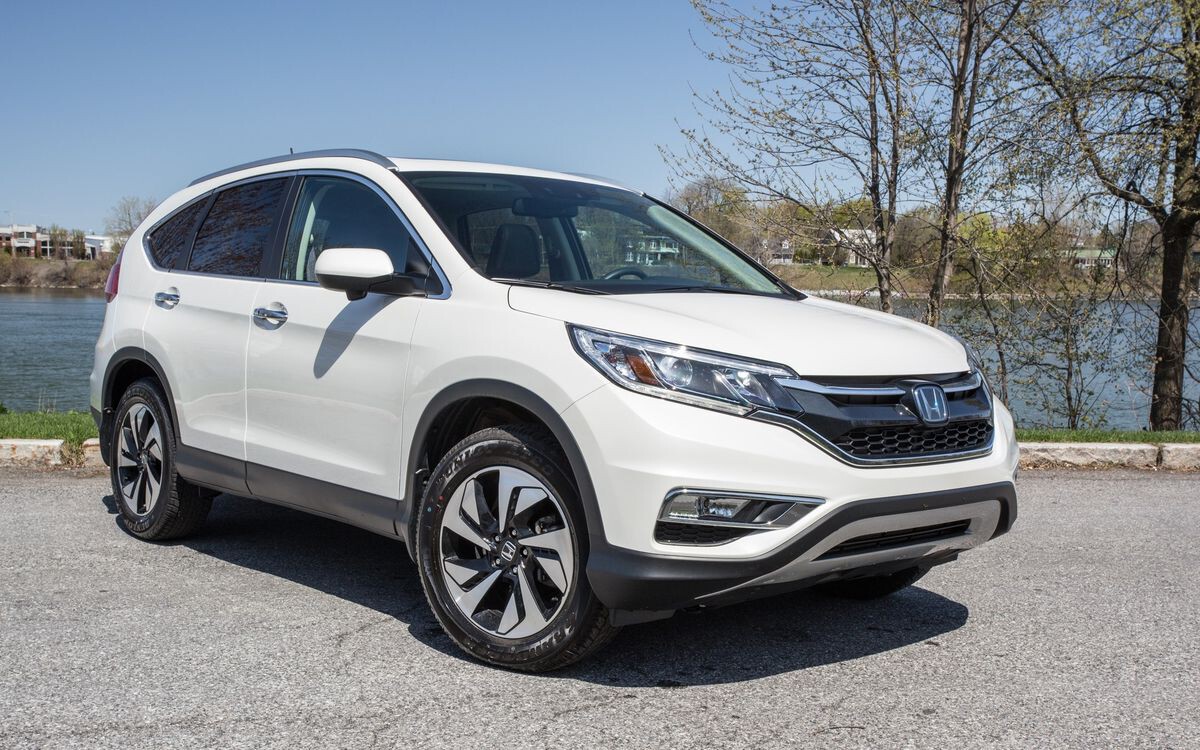
4. Honda CR-V
Honda’s CR-V has long been a benchmark in the compact SUV segment, combining efficiency and versatility with a robust safety record. Its front-impact crash-test success is the result of a carefully engineered body structure that integrates Honda’s G-Force Control Technology.
This technology optimizes the vehicle’s frame to absorb and redirect collision forces away from the passenger compartment, minimizing intrusion and injury risk.
The CR-V’s front crumple zones are specifically designed to deform in a controlled manner during impact, dissipating energy before it reaches the cabin.
This engineered flexibility is crucial for protecting occupants in frontal collisions. Additionally, the CR-V uses a high-tensile steel frame in critical areas to enhance strength without adding excessive weight, contributing to both safety and fuel efficiency.
In terms of active safety, the Honda Sensing suite is a standout feature that greatly contributes to reducing front-end collisions. It includes collision mitigation braking, road departure mitigation, adaptive cruise control, and lane keeping assist. These systems collectively reduce driver error and improve reaction times, effectively lowering the risk of front-impact crashes.
Inside the CR-V, occupant protection is bolstered by a comprehensive set of airbags, including dual-stage front airbags, side airbags, and side curtain airbags. The vehicle also features advanced seatbelt systems with pretensioners and load limiters, which work in concert with the airbags to restrain occupants safely and reduce the potential for injury.
Moreover, the CR-V’s excellent crash-test performance extends beyond just the front-impact scenario. The vehicle has received high marks in side-impact, rollover, and overall crashworthiness tests, underscoring its holistic approach to safety. For drivers seeking a reliable and well-protected SUV, the Honda CR-V represents a compelling option with proven front-impact crash resilience.
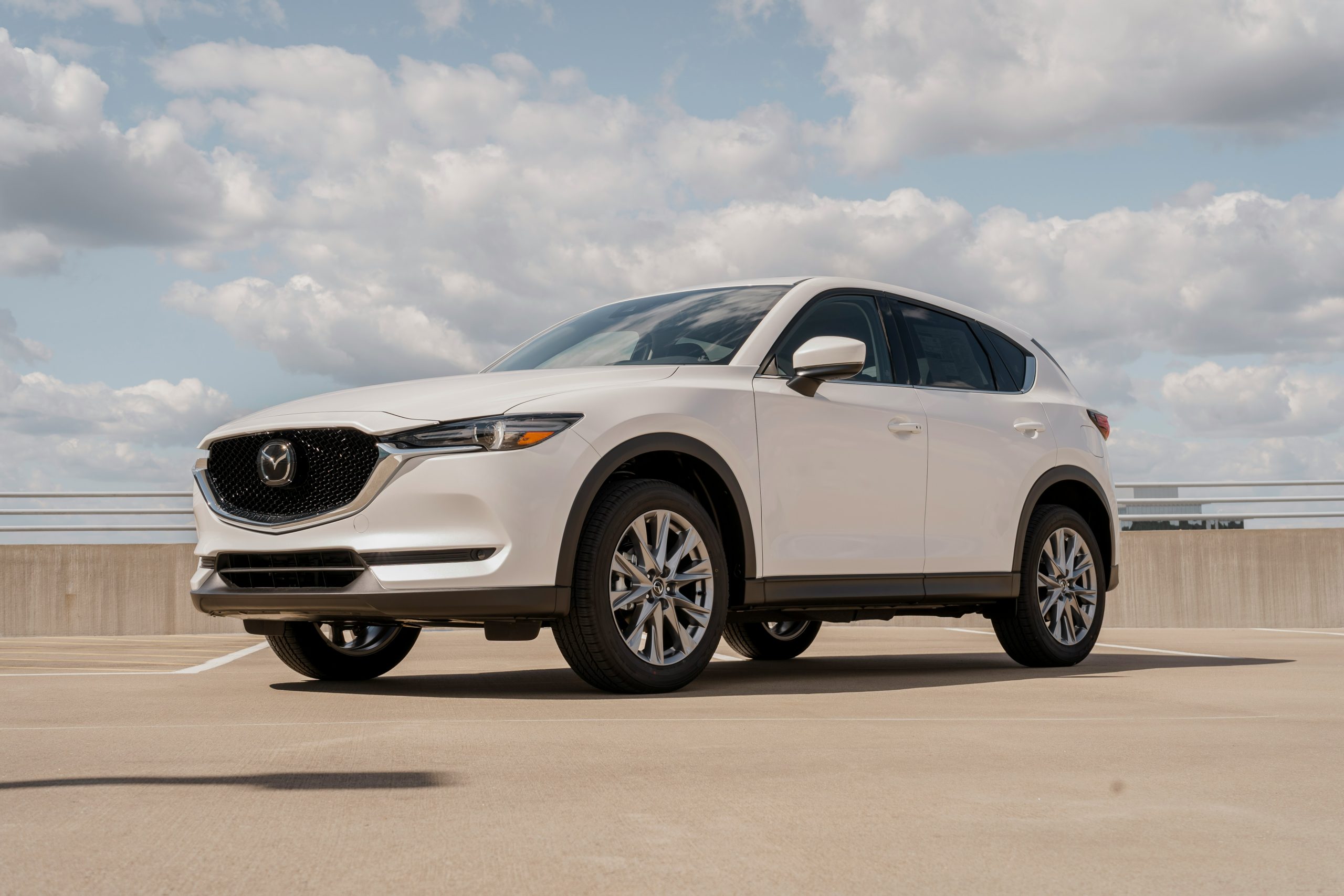
5. Mazda CX-5
Mazda’s CX-5 stands out not only for its engaging driving dynamics and stylish design but also for its impressive safety performance, particularly in front-impact crashes.
Mazda’s approach centers on the innovative Skyactiv technology, which includes a specially designed body structure that maximizes rigidity while effectively absorbing crash energy. This high-strength steel construction is engineered to channel forces away from the passenger cabin during a frontal collision, preserving occupant safety.
One of the CX-5’s distinguishing safety features is its i-Activsense suite, which includes forward collision warning and automatic emergency braking. These systems help drivers detect potential hazards early and can intervene to reduce impact severity or avoid collisions altogether. By preventing accidents before they happen, Mazda enhances overall crash safety.
The CX-5’s restraint and airbag system is comprehensive, featuring front airbags that deploy based on impact severity and occupant position, side airbags, and side curtain airbags that extend to cover rear passengers as well. This layered protection approach ensures that all occupants receive optimal cushioning during a frontal crash.
In addition, Mazda employs advanced seatbelt systems with pretensioners and load limiters, which secure occupants firmly while managing the forces exerted on the body. This synergy between restraint systems and the vehicle’s structural design contributes significantly to the CX-5’s high crash-test scores.
Finally, Mazda’s commitment to safety extends beyond crash performance; the brand also emphasizes driver awareness and accident prevention through its suite of active safety technologies. This balanced focus on both protection and prevention makes the CX-5 one of the safest SUVs available in front-impact crash scenarios.
5 SUVs with the Poorest Crash-Test Front-Impact Scores
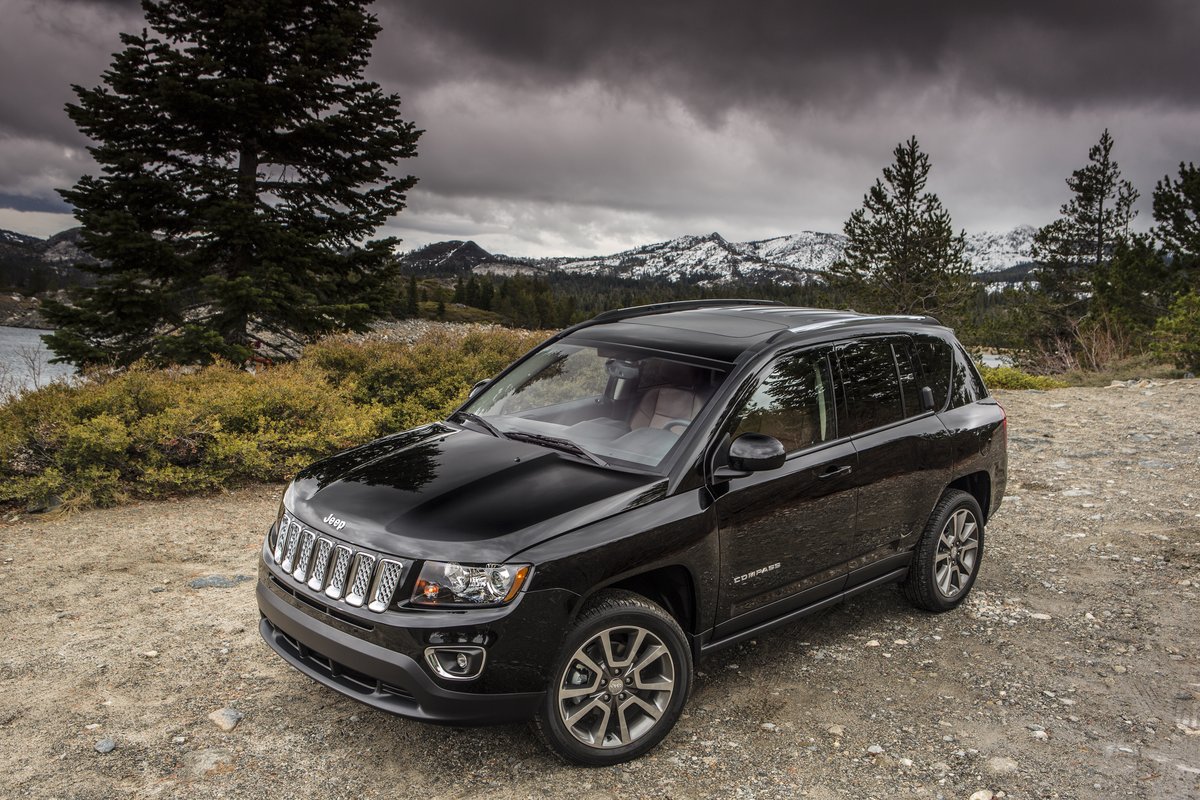
1. Jeep Compass (Older Models)
The Jeep Compass, particularly in its earlier iterations, has often been criticized for its lackluster front-impact crash-test performance. Unlike some of its competitors that invest heavily in structural reinforcements and modern safety technology, older Compass models were designed with less emphasis on crash energy management.
This results in higher risks of occupant injury during frontal collisions due to greater cabin intrusion. The front crumple zones, which are essential for absorbing and dissipating the force of impact, were not optimized in these models, leading to a harsher transfer of forces directly to passengers.
One key weakness in older Compass models lies in their limited use of high-strength steel in critical areas of the frame. Without this reinforcement, the vehicle’s front structure is less able to resist deformation during a crash.
This structural vulnerability can cause the firewall and dashboard to collapse inward, increasing the likelihood of serious injuries to the driver and front-seat passenger. Furthermore, the design of the front-end impact zone in these vehicles lacks the sophisticated energy-absorbing materials and engineered crumple zones that are standard in newer, safer SUVs.
Another concern is the airbag system and restraint mechanisms that were standard in earlier Compass models. While airbags were present, the coverage was not as comprehensive, often missing side curtain airbags or employing airbags with less advanced deployment technology.
This limited the vehicle’s ability to cushion occupants effectively during a crash. Additionally, seatbelt pretensioners and load limiters, which help control occupant movement and reduce injury forces, were less refined or sometimes absent.
Older Jeep Compass models also lacked advanced active safety features that have become crucial in avoiding front-impact collisions.
Systems such as automatic emergency braking, forward collision warning, and lane-keeping assist were not offered or were only available as optional extras, limiting the vehicle’s ability to prevent accidents before impact. This absence of crash avoidance technology compounds the risks presented by the vehicle’s weaker structural design.
Consumers considering used Jeep Compass models from earlier years should be aware of these safety deficiencies. While newer Compass generations have improved significantly in crash safety, older models remain a less secure choice. For buyers prioritizing occupant protection, these early iterations underscore the importance of evaluating crash-test scores alongside vehicle age and safety equipment.
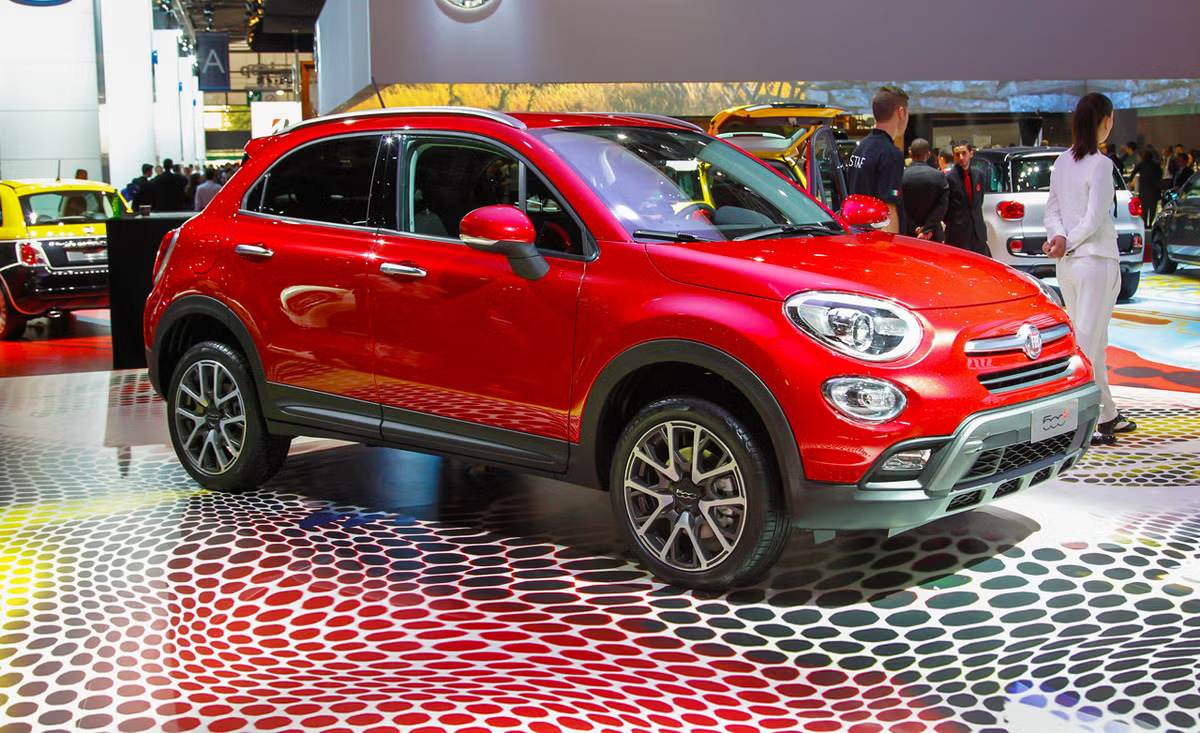
2. Fiat 500X
The Fiat 500X, a subcompact SUV, has struggled to achieve high marks in front-impact crash tests, often ranking towards the lower end among competitors in its class. This is partly due to the vehicle’s smaller overall size and lighter construction, which inherently provide less physical protection in a collision.
While compact SUVs offer maneuverability and urban convenience, their reduced mass and smaller crumple zones can lead to increased crash forces being transmitted to occupants during frontal impacts.
Structurally, the 500X is built on a platform that emphasizes fuel efficiency and style but falls short in terms of crash energy absorption. The front frame lacks the advanced reinforcements and multiple-layer steel components that enable larger SUVs to better manage collision forces.
Consequently, the vehicle experiences greater deformation in the front section during an impact, which can result in intrusion into the passenger cabin and increased injury risk.
The airbag and restraint system in the Fiat 500X, while meeting minimum regulatory standards, does not include some of the more advanced or comprehensive features found in safer SUVs. For example, curtain airbags may not cover the full side windows, and front airbags might deploy with less sophistication in timing or pressure adjustments. This can limit the protective effect, especially for smaller or differently positioned occupants.
Furthermore, the 500X’s lack of extensive active safety technologies is a concern. Features such as automatic emergency braking and pedestrian detection, which are critical in preventing frontal collisions, have not always been standard or fully developed on this model. This absence reduces the vehicle’s ability to avoid accidents or minimize crash severity through driver assistance systems.
For urban drivers who prioritize compact size but also want reliable safety, the Fiat 500X represents a compromise. While it can be suitable for city driving and shorter trips, its front-impact crash performance highlights the trade-offs that come with smaller SUVs, making it less ideal for those who place safety at the top of their buying criteria.
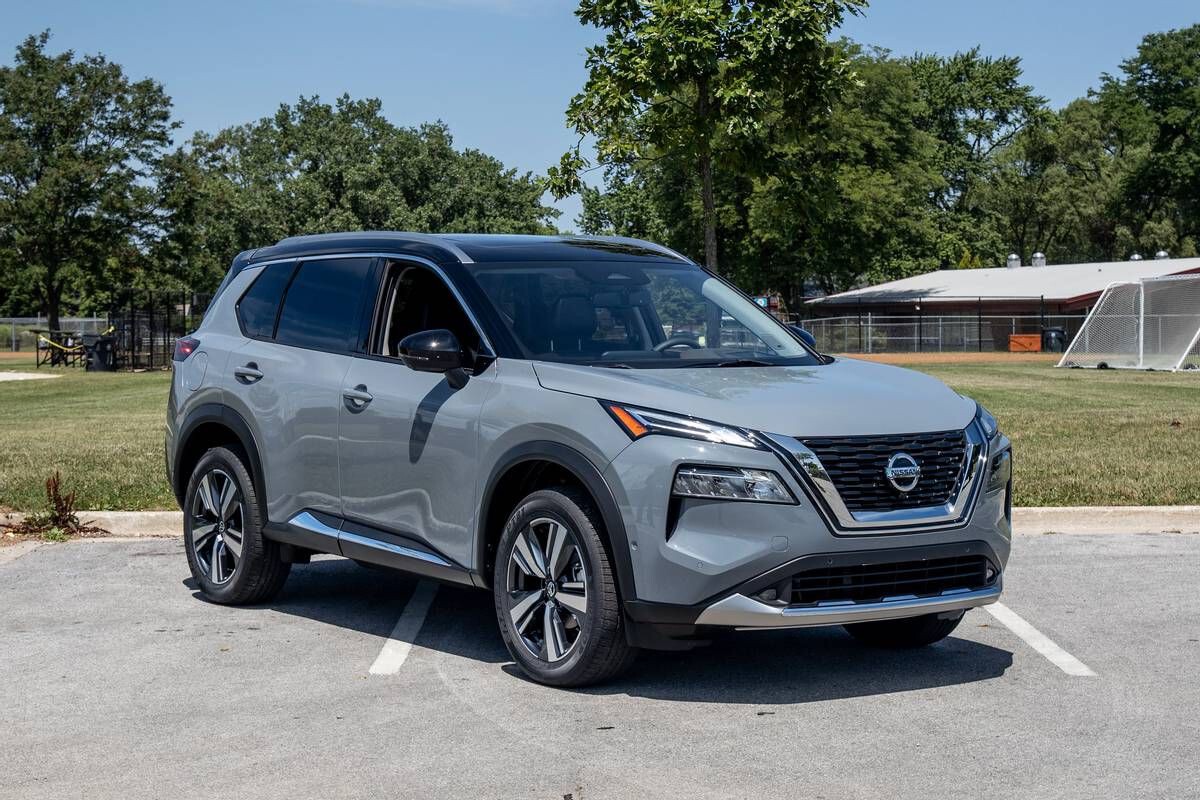
3. Nissan Rogue (Early Generations)
The Nissan Rogue, particularly in its early generations, has a history of disappointing front-impact crash-test results relative to its peers. At the time of its initial release, the Rogue was designed with a focus on affordability and fuel economy rather than leading-edge crash safety. As a result, its structural design and safety equipment were not up to par with the increasing demands of crash-test standards.
The front structure in early Rogue models uses less high-strength steel reinforcement, resulting in a weaker frame that absorbs less energy in collisions. This can cause significant deformation of the front end and intrusion into the occupant compartment, increasing the likelihood of injury in a frontal crash.
Additionally, the crumple zones in these models were not optimized to the level seen in later SUVs, which employ layered materials and advanced geometries to better control impact forces.
Airbag deployment systems and coverage were also less comprehensive in earlier Rogue models. Although front airbags were standard, side and curtain airbags were sometimes optional or not included, reducing the level of protection in multi-directional impacts.
Seatbelt technologies such as pretensioners and load limiters were not as sophisticated as those found in more modern vehicles, meaning occupants were less securely restrained during a collision.
Active safety technology was another area where early Rogue models lagged behind. Advanced features like automatic emergency braking, forward collision warning, and lane departure warning systems were absent or only available on higher trims, limiting their effectiveness in preventing frontal impacts. This absence is critical given how much these systems have been shown to reduce collision frequency and severity in newer vehicles.
Prospective buyers of used Nissan Rogues should be particularly vigilant about the model year and associated safety features. While recent Rogues have significantly improved and now earn much better crash-test scores, older models remind consumers of the rapid pace of advancement in vehicle safety and the importance of selecting vehicles with up-to-date crash protection.
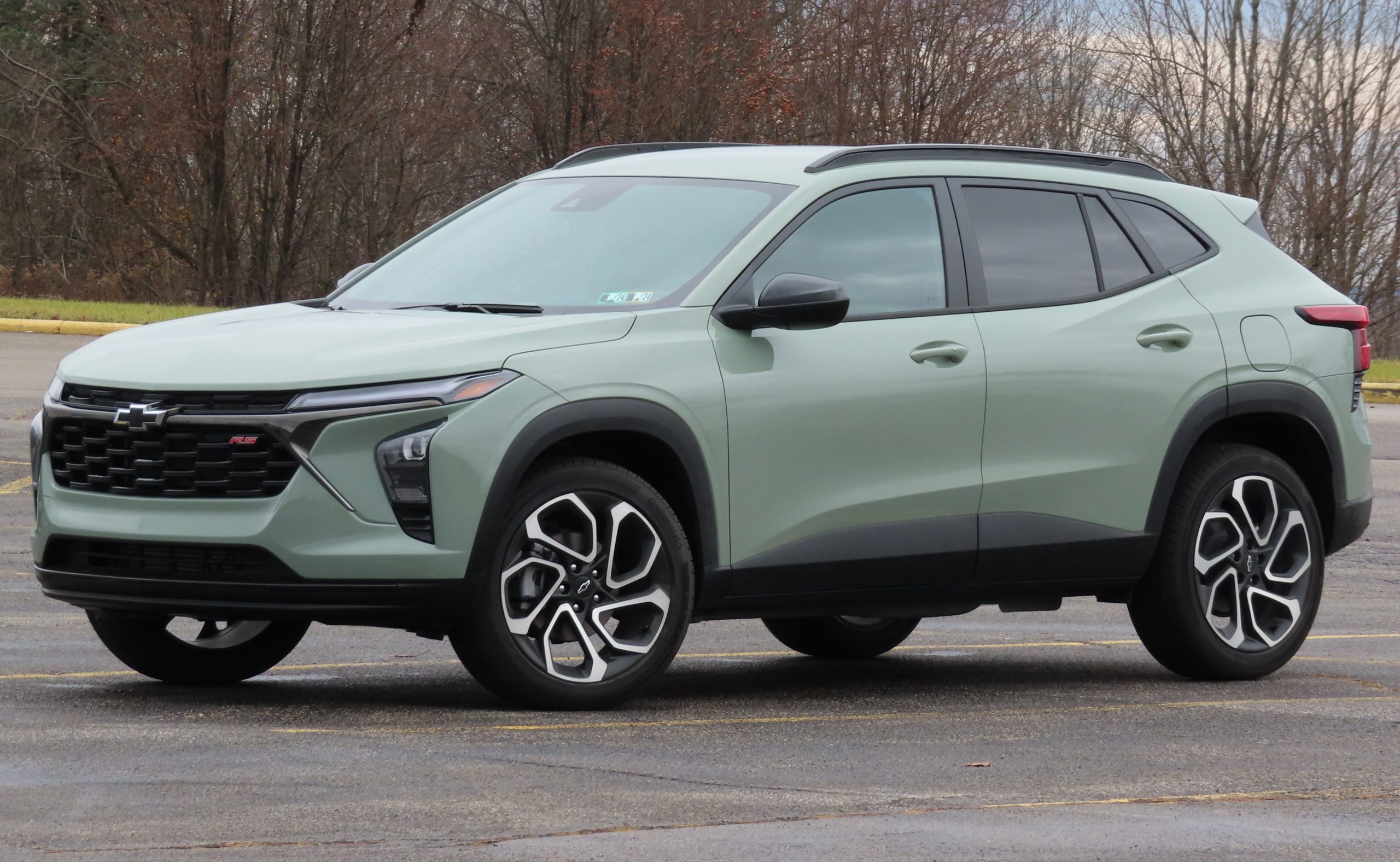
4. Chevrolet Trax
The Chevrolet Trax is a subcompact SUV that, despite its popularity in urban markets, has consistently demonstrated poor front-impact crash-test scores, especially in models from earlier production years.
This subpar performance is largely attributable to the vehicle’s smaller size, less robust construction, and limited inclusion of advanced safety features. These factors culminate in a vehicle that offers less effective protection in the event of a frontal collision.
One of the major drawbacks of the Trax is its front-end structural design. The frame lacks sufficient high-strength steel reinforcements that are critical for absorbing and redistributing crash forces.
Consequently, the front of the vehicle tends to deform excessively upon impact, increasing the likelihood of intrusion into the passenger compartment. This scenario puts occupants at greater risk of injury due to the compromised protective space inside the cabin.
The Trax’s airbag system is basic, providing only essential protection without the enhanced multi-stage deployment or extensive coverage seen in safer SUVs. Side curtain airbags may be limited or unavailable on lower trims, reducing head protection during side and rollover events, which often accompany front-impact crashes.
In terms of active safety technology, the Trax also falls behind. Many models lack features like forward collision warning, automatic emergency braking, or lane-keeping assist.
The absence of these technologies means the vehicle offers less assistance to drivers in avoiding or mitigating frontal crashes. This limitation is especially critical in urban driving environments where sudden stops or pedestrian encounters are frequent.
For buyers seeking a small, affordable SUV, the Trax may be appealing in terms of price and maneuverability, but its lower crash-test ratings highlight the safety compromises involved. Consumers should weigh these factors carefully and consider whether the Trax meets their safety expectations, particularly if they regularly drive in environments with higher accident risks.
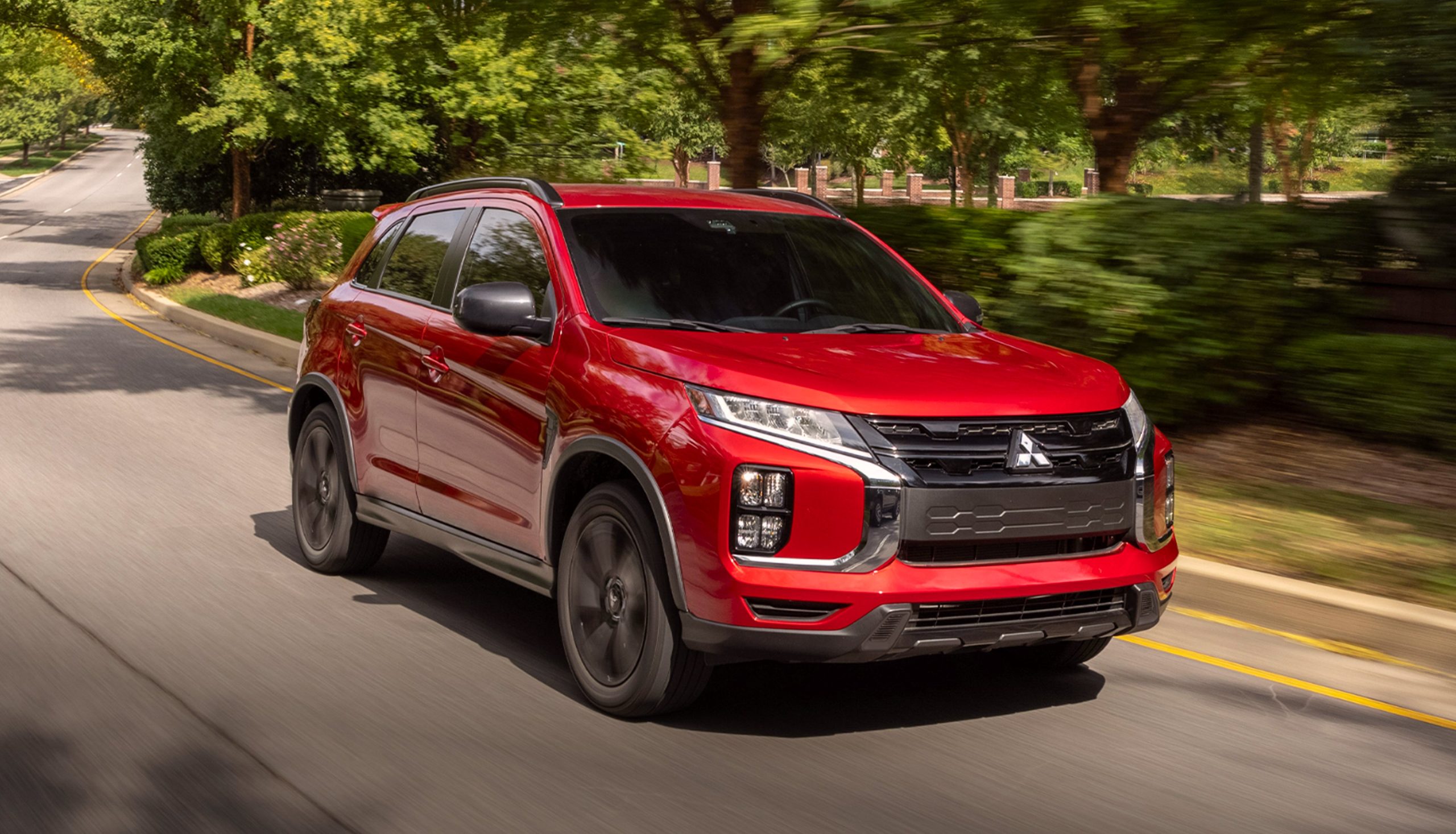
5. Mitsubishi Outlander Sport
The Mitsubishi Outlander Sport is another SUV that has struggled with front-impact crash safety in its earlier versions. Despite its appeal as a compact and affordable SUV, the Outlander Sport’s design and safety features have lagged behind many competitors, resulting in poorer performance in front-impact crash tests.
Structurally, the Outlander Sport uses an older chassis design with fewer high-strength steel reinforcements in the front section. This results in less effective energy absorption during collisions, leading to increased deformation and higher chances of intrusion into the passenger compartment. The lack of modern crumple zone engineering means the vehicle cannot dissipate crash energy as efficiently as newer designs.
The airbag system in the Outlander Sport is functional but not as comprehensive as those found in higher-ranking SUVs. While front airbags are standard, side curtain airbags and advanced multi-stage airbags are less common, particularly in base trims. This reduces the overall level of occupant protection in a frontal collision.
Active safety features are also limited on the Outlander Sport, with many models lacking automatic emergency braking, forward collision warning, or other crash mitigation technologies that have become standard elsewhere. This absence reduces the vehicle’s ability to prevent frontal collisions or lessen their impact severity.
For drivers considering the Mitsubishi Outlander Sport, especially those looking at used models, it is crucial to understand these safety limitations. While the SUV offers value and versatility, its lower front-impact crash-test scores suggest it may not provide the highest level of protection in serious accidents, emphasizing the importance of thorough safety evaluations before purchase.
ALSO READ: 5 Cars That Still Drive Like New at 10 Years and 5 That Feel Ancient
As we’ve explored in detail, the front-impact crash-test performance of SUVs can vary widely—even within the same segment or price range. While the popularity of SUVs continues to surge across global markets, not all of them offer equal levels of safety when faced with the violent reality of a head-on collision.
It’s easy to be swayed by aesthetics, marketing hype, or brand loyalty, but ultimately, it’s the unseen engineering beneath the metal and plastic that will make the most difference in a life-threatening crash. Whether you’re transporting loved ones or simply protecting yourself, knowing how a vehicle handles a front-impact scenario is invaluable.
The five top-performing SUVs showcased in this article—the Volvo XC90, Subaru Outback, Toyota Highlander, Honda CR-V, and Mazda CX-5—have consistently demonstrated that it is possible to combine modern design, comfort, and performance with class-leading safety.
These vehicles utilize a combination of high-strength structural engineering, advanced airbag deployment systems, and crash mitigation technologies such as automatic emergency braking and forward collision warning to protect occupants before, during, and after a crash. Their manufacturers have made safety a cornerstone of their vehicle development strategy, not just an add-on or marketing buzzword.
Each of these high-ranking SUVs embodies a design philosophy rooted in occupant protection. They manage energy distribution across the body frame, reduce cabin deformation during impact, and implement seatbelt systems that work synergistically with airbags to minimize trauma.
Furthermore, their active safety systems act as a second layer of defense, often preventing crashes before they occur. In an automotive world increasingly driven by autonomous technology and digital interfaces, these vehicles balance modern convenience with life-saving hardware and software in ways that set the standard for others to follow.
Conversely, the five SUVs with poor front-impact crash-test scores—the Jeep Compass (older models), Fiat 500X, early-generation Nissan Rogue, Chevrolet Trax, and Mitsubishi Outlander Sport—highlight the significant risks that come with outdated engineering, underdeveloped safety systems, or cost-cutting compromises.
These vehicles, particularly in their earlier model years, either lack adequate crumple zones, underperform in structural integrity tests, or fail to include modern collision prevention features. In many cases, they expose their occupants to increased risks due to insufficient airbag deployment or poor restraint performance during a frontal crash.
While it’s important to recognize that some of these models have seen safety improvements in more recent iterations, the presence of earlier versions on the used car market means that many buyers are still exposed to these risks.
For consumers shopping on a budget or purchasing secondhand vehicles, it becomes especially critical to research the specific model year and safety ratings before committing. A seemingly small difference in design or trim can translate into a major difference in survivability during a crash.
The automotive industry has come a long way in making vehicles safer, and many manufacturers now go above and beyond federal requirements to secure top ratings from independent testing agencies. However, gaps still remain.
Consumers must take responsibility for researching crash-test scores and not assume that all SUVs offer the same level of protection just because they appear similar in size or capability. Organizations like IIHS and NHTSA provide transparent, detailed results that can empower consumers to make informed choices based on real-world testing.
In conclusion, the divergence between the best and worst performers in front-impact crash testing serves as a powerful reminder: Safety is not a luxury—it’s a necessity. Whether you’re in the market for a brand-new family hauler or a pre-owned daily driver, understanding how a vehicle performs in a frontal collision could be one of the most important decisions you make.
A vehicle’s crashworthiness could quite literally save your life or the lives of those riding with you. By choosing wisely, you not only gain peace of mind, you take an active step in protecting what matters most.

